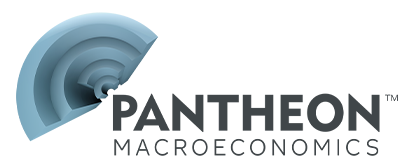- © 2025 Pantheon Macroeconomics
- Tel: +1 914 610 3830
Pantheon Macroeconomics
Best viewed on a device with a bigger screen...
Below is a list of our US Publications for the last 5 months. If you are looking for reports older than 5 months please email info@pantheonmacro.com, or contact your account rep
Please use the filters on the right to search for a specific date or topic.
Manufacturing is surviving rather than thriving.
Q3's strength is unlikely to be sustained.
THE PAUSE IN THE FED’S EASING CYCLE WILL BE BRIEF...
The implied jump in services inflation makes little sense.
October's strength in control sales looks unlikely to last.
Lackluster, but not alarming enough for a January easing.
Manufacturing capex and hiring likely to remain very weak
The dots imply three regional Fed presidents who will
vote in 2026 disagreed with this meeting’s easing...
...But we reckon all the permanent voters expect to
ease in 2026; labor data will trigger March action.
Year-over-year growth in the ECI was stable at 3.6%
in Q3, but leading indicators signal a sharp fall soon.

U.S. Document Vault, independent macro research, Pantheon Macro, Pantheon Macroeconomics, independent research, ian shepherdson, economic intelligence,